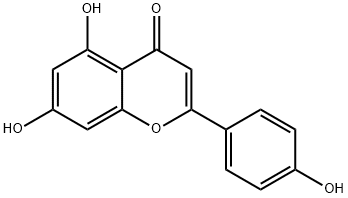Chamomile Oil
- CAS NO.:8015-92-7
- Molecular Weight: 0
- MDL number: MFCD00676682
- EINECS: 616-968-8
- Update Date: 2024-12-18 14:15:30
What is Chamomile Oil?
Chemical properties
Chamomile oil is obtained by steam distillation of the dried flowers of the so-called English or Roman chamomile, Chamaemelum nobile. It has a strong, aromatic odor, characteristic of flowers. The odor is extremely diffusive, but it has little tenacity. The flavor of the oil is somewhat bitter, chemical or medicinal, but has also been described as fruity-herbaceous and warm.
Physical properties
It is a light-blue or light-blue-greenish liquid. The color may change with age to greenish-yellow or yellow-brown. It is almost completely soluble in mineral oil. It is soluble with some haziness, in propylene glycol, but it is insoluble in glycerin.
Occurrence
Found in the flowers of the plant Anthemis nohilis L. (Fam. Compositae).
The Uses of Chamomile Oil
chamomile oil is considered a capillary wall constrictor, an antiallergenic agent, and antiseptic, cooling, analgesic, emollient, and healing. It is considered useful for treating burns and skin inflammations as well as dermatitis, and beneficial for acne, dry, or supersensitive skins. The active principles are a pale blue volatile oil (which can turn yellow with time), a little anthemic acid, tannic acid, and a glucoside. The volatile oil, obtained through distillation, is lost in the preparation of the extract. The whole plant is odoriferous and of value, but the flower heads are primarily credited with therapeutic benefits. Because the chief botanical virtue of the plant lies in the central disk of the yellow florets and in the cultivated double form of the white florets, the botanical properties of the single, wild chamomile are considered to be the most powerful.
The Uses of Chamomile Oil
Flowers in herbal teas. Extracts and oils in perfumery; as flavor in foods and alcoholic beverages; hair dye.
Preparation
By steam distillation of the dried flowers of Anthemis nohilis L.
Definition
Extractives and their physically modified derivatives. Anthemis nobilis, Compositae.
Essential oil composition
The chief constituents of chamomile oil Roman are n-butyl angelate and isoamyl angelate
Safety Profile
Low toxicity by ingestion and skin contact. A rmld allergen. A skin irritant. See aIso ESTERS. Combustible when heated. When heated todecomposition it emits acrid smoke and irritating fumes.
Properties of Chamomile Oil
| Boiling point: | 161 °C(lit.) |
| alpha | 20 -1 to +4° |
| Density | 0.902 g/mL at 25 °C(lit.) |
| vapor pressure | 2.917hPa |
| FEMA | 2272 | CHAMOMILE FLOWER, ENGLISH, OIL (ANTHEMIS NOBILIS L.) |
| refractive index | n |
| Flash point: | 138 °F |
| storage temp. | 2-8°C |
| Odor | at 100.00 %. chamomile |
| Water Solubility | 110mg/L at 20℃ |
| Merck | 13,2049 |
| EPA Substance Registry System | Oils, chamomile (8015-92-7) |
Safety information for Chamomile Oil
| Signal word | Warning |
| Pictogram(s) |
 Exclamation Mark Irritant GHS07 |
| GHS Hazard Statements |
H315:Skin corrosion/irritation |
Computed Descriptors for Chamomile Oil
Chamomile Oil manufacturer
New Products
(S)-3-Aminobutanenitrile hydrochloride 4-Methylphenylacetic acid N-Boc-D-alaninol N-BOC-D/L-ALANINOL Tert-butyl bis(2-chloroethyl)carbamate 3-Morpholino-1-(4-nitrophenyl)-5,6-dihydropyridin- 2(1H)-one Furan-2,5-Dicarboxylic Acid Tropic acid 1-Bromo-3,5-Di-Tert-Butylbenzene S-2-CHLORO PROPIONIC ACID ETHYL ISOCYANOACETATE 2-Bromo-1,3-Bis(Dimethylamino)Trimethinium Hexafluorophosphate 4-IODO BENZOIC ACID 3-NITRO-2-METHYL ANILINE 1-(2,4-DICHLOROPHENYL) ETHANAMINE (2-Hydroxyphenyl)acetonitrile 4-Bromopyrazole 2-(Cyanocyclohexyl)acetic acid 4-methoxy-3,5-dinitropyridine 1-(4-(aminomethyl)benzyl)urea hydrochloride 2-aminopropyl benzoate hydrochloride diethyl 2-(2-((tertbutoxycarbonyl)amino) ethyl)malonate tert-butyl 4- (ureidomethyl)benzylcarbamate Ethyl-2-chloro((4-methoxyphenyl)hydrazono)acetateRelated products of tetrahydrofuran








You may like
-
 Roman chamomile oil CAS 8015-92-7View Details
Roman chamomile oil CAS 8015-92-7View Details
8015-92-7 -
 2033-24-1 98%View Details
2033-24-1 98%View Details
2033-24-1 -
 1975-50-4 98%View Details
1975-50-4 98%View Details
1975-50-4 -
 2-HYDROXY BENZYL ALCOHOL 98%View Details
2-HYDROXY BENZYL ALCOHOL 98%View Details
90-01-7 -
 2-Chloro-1,3-Bis(Dimethylamino)Trimethinium Hexafluorophosphate 221615-75-4 98%View Details
2-Chloro-1,3-Bis(Dimethylamino)Trimethinium Hexafluorophosphate 221615-75-4 98%View Details
221615-75-4 -
 61397-56-6 CIS BROMO BENZOATE 98%View Details
61397-56-6 CIS BROMO BENZOATE 98%View Details
61397-56-6 -
 14714-50-2 (2-Hydroxyphenyl)acetonitrile 98+View Details
14714-50-2 (2-Hydroxyphenyl)acetonitrile 98+View Details
14714-50-2 -
 118753-70-1 98+View Details
118753-70-1 98+View Details
118753-70-1